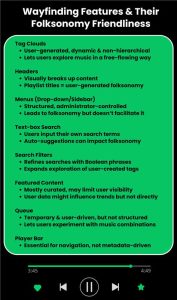In an era where software quality directly impacts brand trust, market share, and user
retention, relying solely on traditional testing methodologies is no longer viable. Modern
software teams, particularly those in high-stakes industries like insurance, need flexible,
scalable approaches to testing. Enters the Hybrid Model in Software Testing.
This blog explores the hybrid model in manual testing, its frameworks, real-world
examples, and why it is rapidly becoming the backbone of resilient QA strategies.
What Is Hybrid Model Testing?
Hybrid Model Testing refers to a testing approach that combines multiple testing
methodologies—typically manual and automated testing—to leverage the strengths of
both. Instead of relying solely on human intervention or machine execution, hybrid testing
creates a balanced ecosystem where different testing strategies coexist.
This model is particularly useful in complex enterprise applications where some
components require the precision of manual testing (like exploratory or usability testing),
while others benefit from the speed and repeatability of automation (like regression or
performance testing).
Why the Hybrid Model in Manual Testing Is Gaining Ground
Manual testing is invaluable when human intuition, observation, and creativity are
required. However, it becomes inefficient at scale. This is where the hybrid model becomes
crucial—it doesn’t discard manual testing; instead, it enhances it.
For instance, in regulated domains such as insurance software testing, where workflows
must meet strict compliance guidelines, manual testing validates nuanced scenarios,
while automation ensures quick feedback loops for unchanged features.
Benefits of the Hybrid Model in Software Testing
1. Balanced Risk Coverage
Hybrid testing helps you cover both exploratory and regression test cases, ensuring
critical paths and edge cases are tested effectively.
2. Faster Time to Market
Automation accelerates repetitive tasks, while manual testing focuses on complex
or new features—resulting in faster and more thorough release cycles.
3. Cost Efficiency
While automation may require upfront investment, hybrid testing ensures ROI by
reducing manual efforts over time without compromising test depth.
4. Adaptability Across SDLC Phases
Whether you’re in development, staging, or post-release monitoring, hybrid testing
provides adaptable strategies for each phase.
Hybrid Testing Examples
• Case 1: Insurance Claims Portal
A manual tester verifies edge-case scenarios like multi-claim dependencies or
exception handling, while an automated test suite covers common use cases like
form submissions or policy number validations.
• Case 2: Healthcare Management System
Automated scripts perform load testing on appointment scheduling APIs, whereas
manual testing ensures patient-facing UIs are user-friendly and accessible.
• Case 3: E-commerce Checkout Flow
The payment gateway is tested manually for UI issues and error handling, while
regression tests for cart, inventory, and order summary are automated.
The Structure of a Hybrid Testing Framework
A well-defined hybrid testing framework combines elements of keyword-driven, data
driven, and modular testing frameworks, layered with a test management platform. This
allows QA teams to:
• Reuse modular components for automated scripts
• Execute manual test cases in tandem with automation runs
• Integrate with CI/CD pipelines
• Map test coverage to business risk priorities
Popular tools like Selenium, TestNG, and Appium can be part of the automation suite, while
tools like TestRail or Zephyr manage manual test cases and results.
Key Considerations Before Adopting a Hybrid Model
• Team Skill Set: Ensure your QA team is skilled in both manual and automation
disciplines.
• Tool Integration: Choose tools that support interoperability across manual and
automated testing efforts.
• Test Case Selection: Not all tests should be automated—identify repetitive and
stable test scenarios to prioritize automation.
Final Thoughts
Hybrid Model Testing offers a pragmatic, scalable solution for teams balancing speed,
accuracy, and cost. It reflects the reality that no one-size-fits-all approach works in
software testing—especially in sectors like insurance, where precision and performance
are non-negotiable.
By blending the human insight of manual testing with the efficiency of automation, QA
teams can confidently deliver quality software that meets both business goals and user
expectations.










